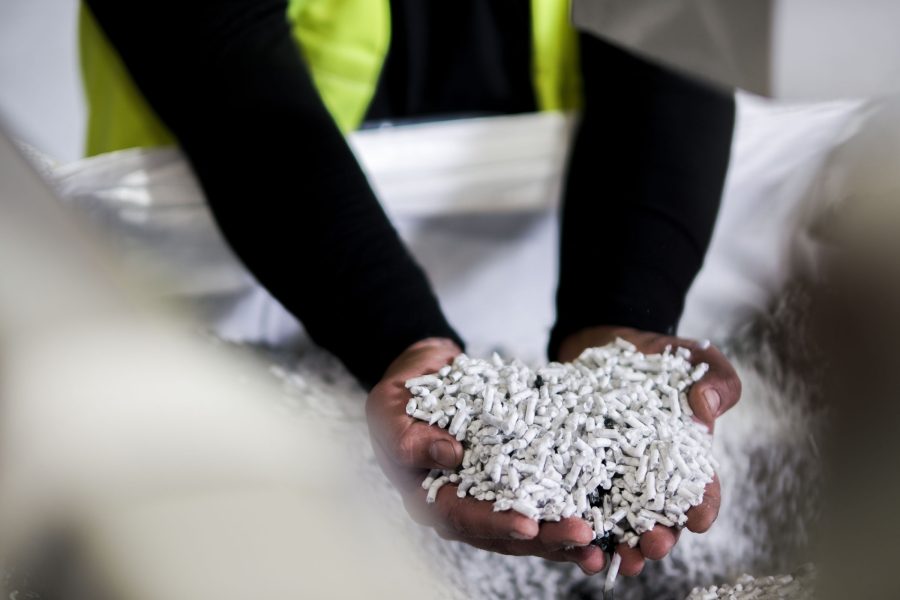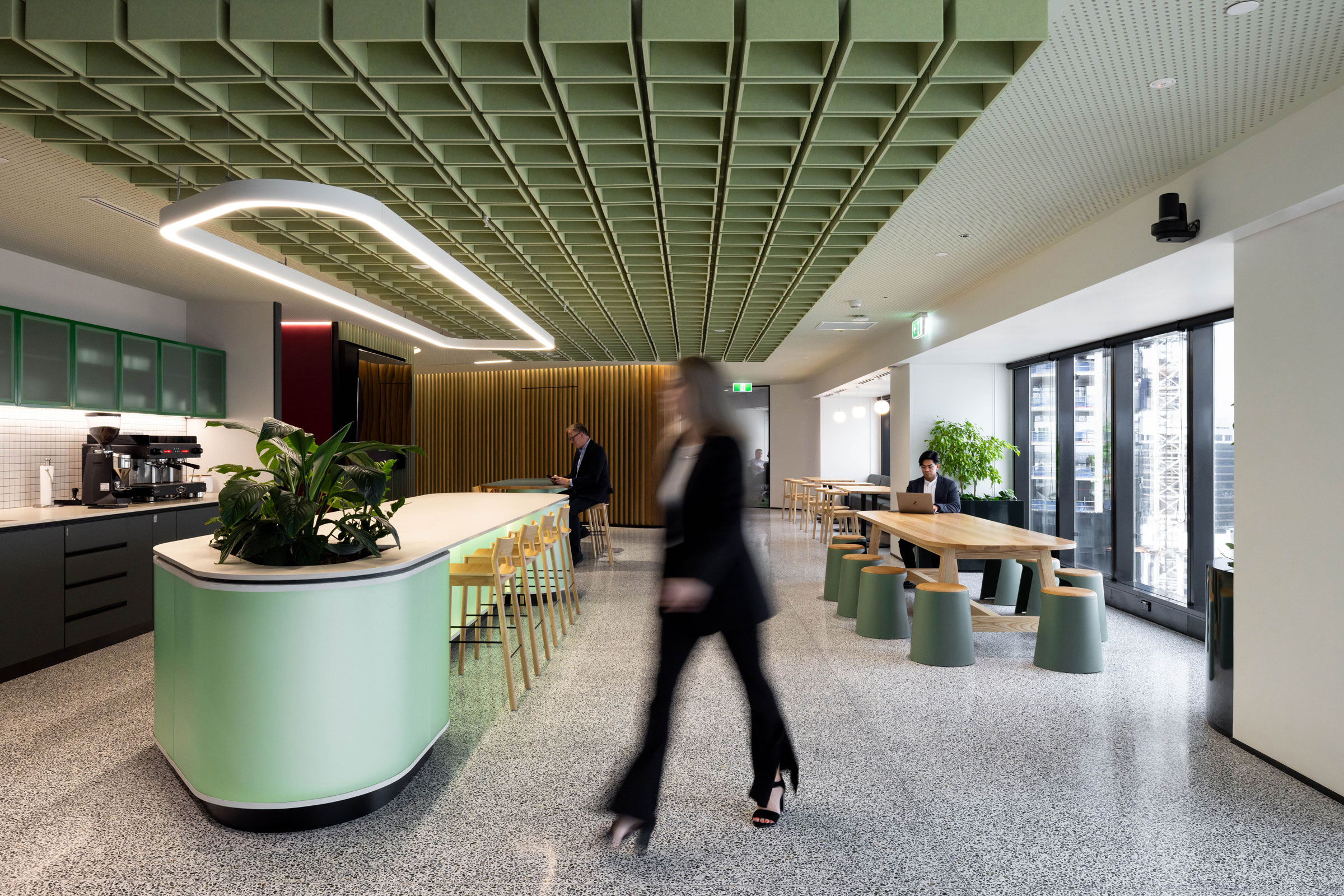Story at a glance:
- Certification frameworks now encompass environmental, social, and governance factors, reflecting a broader view of sustainability.
- Embedding sustainability in product development helps companies anticipate changes and drive industry progress.
- EPDs and certifications are increasingly essential as data transparency and verifiable information become top priorities.
What happens when sustainability metrics evolve from simple benchmarks to complex, multi-layered frameworks? For architects and designers the certification landscape now tracks not just a maze of environmental factors but also social and governance concerns, reshaping how materials and projects are assessed.
While many in the industry scramble to keep up with these expanding requirements, New Zealand-headquartered Autex Acoustics has taken a distinctly proactive approach.
Sustainability Strategy

Photo courtesy of Autex Acoustics
Zoe Delano, the acoustic material company’s sustainability lead, says that while her team tracks market trends—client documentation requests, building ratings, and product library developments—Autex strategically positions itself to anticipate and sometimes even surpass changing certification requirements.
That’s partly because the company has situated its sustainability team directly within product development. “We now sit under the creative director, who has a strong vision for where sustainability is going,” she says. “We see where the industry is, but we also know where we want to be; we have a North Star we follow.”
Interior Spaces Carry New Weight

Photo courtesy of Autex Acoustics
This forward-thinking approach is crucial as sustainability expectations expand beyond buildings to the products and materials within them. “The focus has always been on the building envelope,” Delano says. “But interior products turn over much faster. Spaces are refurbished far more frequently, and materials are on a much shorter life cycle than the structure itself. That’s driving renewed interest in interiors.”
Of course, client demands for sustainability credentials vary across markets, adding a layer of complexity. “The scale of procurement often dictates how many resources clients dedicate to suppliers,” Delano says, noting that materials now play a crucial role in achieving building certifications, driving credits, and improving a property’s rating.
“The bigger the client, the more high-end the project, the more we get a real push for what is really the cutting edge for sustainability and certifications,” Delano says.
This shift is also changing how sustainable interiors are approached. “We’re seeing a push for circularity—designing for disassembly and take-back schemes that extend product life cycles,” Delano says.
For Autex, ensuring occupant safety has also been a priority, and certification frameworks increasingly reflect this. “There are so many unregulated products on the market, so the industry has taken it upon itself to create benchmarks for interior products,” she says. “We do extensive testing and hold several certifications around that. It’s a key consideration—the way our materials interact with human health.”
Additionally, Delano says the company’s products are also designed to improve occupant well-being. “We’re boosting acoustic comfort in a room, making it more habitable,” she says. “These contributions are integral to certifications like WELL and other frameworks that prioritize human health.”
Despite all these changes Delano believes the industry is witnessing yet another shift—one that represents a profound adjustment in how sustainable buildings are conceptualized. “Sustainability is so focused on minimizing harm that it can often feel like a depressing story,” she says. “But we’re starting to see a trend toward regenerative products—not just minimizing health and environmental impacts but actively contributing to society and the environment.”
This shift aligns with Autex’s approach, which explores how its products can create net-positive outcomes. “It’s about asking how can we give back and how can we actually negate the negative impacts and contribute positively to the environment and society?” Delano says.
This forward-thinking approach has positioned Autex at the forefront of emerging certification frameworks. “We’re not ready to reveal all the details yet, but we’ll be the first to be certified under a brand-new certification coming out that takes regeneration into account,” she says.
Certifications Spur Strategic Advantages

Embedding sustainability in product development helps companies anticipate changes and drive industry progress. Photo courtesy of Autex Acoustics
The strategic importance of certifications goes beyond mere compliance. For Autex they provide a valuable opportunity to offer transparency around processes and product ingredients—a point Delano emphasizes as central to their sustainability approach.
“Certifications provide the validation of all the work that we have done.”
Take life cycle assessments. The company commissioned its first LCA more than 20 years ago, when the practice wasn’t yet mainstream. Autex is also the first in Australia and New Zealand to have its Declare Labels, which disclose product ingredients and their environmental impact, independently verified—an uncommon commitment, given that Declare Labels are typically self-disclosed.
“There’s a lot of greenwashing out there,” Delano says. “Declarations and certifications are a great way to prove that we’ve done the work to a certain standard and that we excel in those benchmarks.”
Certifications also serve as prerequisites in many cases—particularly when a client is pursuing a building rating scheme. “A product without certain core certifications will not be specified in such a project,” she says. “So that’s really a deal breaker in a lot of cases.”
Beyond client requirements, certifications can drive improvements throughout the supply chain. Delano shares how pursuing the Global GreenTag Level A certification led to unexpected benefits: “A big part on the social side was a rigorous supply chain analysis,” she says. “It helped enhance transparency and align our expectations more closely with our own suppliers.”
This kind of due diligence highlights another important reality—not all certifications serve the same purpose. Understanding the different verification methods is key.
As more buildings undergo life cycle assessments, this detailed data from suppliers will be increasingly prioritized in the decision-making process.
Certifications like Cradle to Cradle or Global GreenTag are a formal recognition by a third party that confirms a product has met specific sustainability criteria. In contrast, declarations like Environmental Product Declarations (EPDs) are self-reported statements, and the data may or may not be verified by a third party. EPDs are often based on data gathered by an LCA, which is a comprehensive analysis across the whole life cycle of the product.
LCAs are where manufacturers gain a holistic view of their environmental impact, Delano says. “It’s the gold standard and a foundation that certifications and declarations are built upon.”
And while these sustainability credentials can be expensive and quite time-consuming to work through, Delano says they’re gaining importance—particularly EPDs. “They’re essential tools for communicating a product’s carbon content,” she says. “As more buildings undergo life cycle assessments, this detailed data from suppliers will be increasingly prioritized in the decision-making process.”
As a result, products with robust EPDs will likely be “preferentially specified” in future projects, Delano says. Companies looking to stay competitive should prioritize gathering this information early on.
Looking Toward Regenerative Standards
This need for early action also aligns with Delano’s prediction about the future of sustainability certifications. “Year over year the benchmarks get higher, and the considerations become wider and more comprehensive,” she says. “As certifications evolve the benchmarks will continue to increase and the types of assessments will continue to expand.”
And as the focus shifts from merely reducing harm to actively creating positive impact, the future of sustainability will demand more from companies. Those leading the way today will not only have a head start meeting the rising standards of tomorrow—they’ll help define them, shaping a more sustainable and regenerative future for all.

